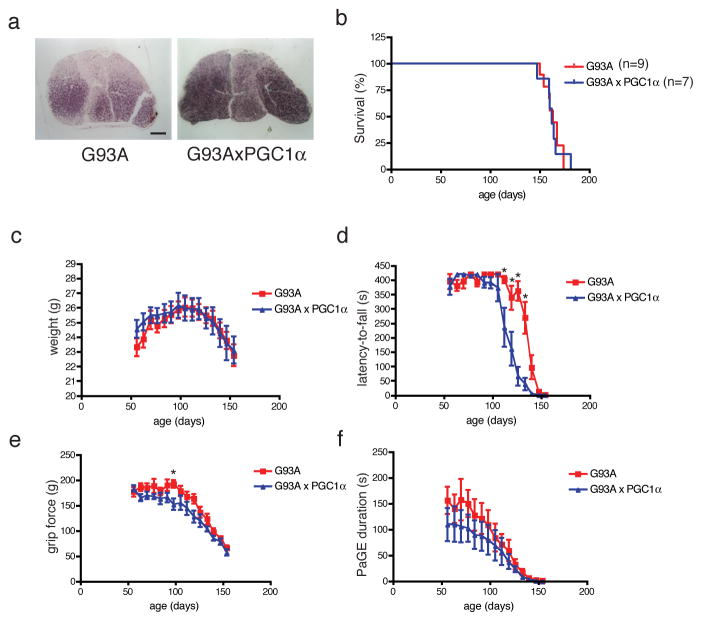Figure 8. PGC-1α-mediated increase in the muscle oxidative phenotype does not improve survival or motor function in G93A mice.
G93A mice were mated with MCK-PGC-1α mice to examine the effect of enhanced mitochondrial biogenesis in the muscle on disease progression. (a) Gastrocnemius muscle from G93A/MCK-PGC-1α mouse shows higher SDH staining than S93A mouse demonstrating increased mitochondrial activity in the presence of PGC-1α transgene (scale=500μm). (b) Survival analysis and (c) weekly weight measures (Two-way ANOVA, n=9 G93A; n=7 G93A/MCK-PGC-1α) did not show a genotypic difference between the two groups. (c) Motor function was examined in these mice using the Rotarod apparatus. The difference in the rotarod latency-to-fall values between the two groups were statistically significant (Two-way ANOVA, p<0.0001, n=9 G93A; n=7 G93A/MCK-PGC-1α). Bonferroni test shows G93A/MCK-PGC-1α mice performed worse at 112 (p<0.001), 119 (p<0.001), 126 (p<0.001), and 133 (p<0.001) day time-points. Paw grip strength was longitudinally examined using grip strength meter (e) and paw grip endurance test (PaGE, f). Statistical analysis revealed a significant genotype effect for both the grip strength and PaGE (e and f, respectively; Two-way ANOVA; e: p<0.0001; f: p=0.0082, n=9 G93A; n=7 G93A/MCK-PGC-1α). Bonferroni post-test shows that SOD1/PGC1-α mice performed significantly worse at 98-day time-point for the grip strength (e, Bonferroni post-test, p<0.05, n=9 G93A; n=7 G93A/MCK-PGC-1α). However, there was no difference between the genotypes at any of the time-points for the PaGE test (f). Therefore, enhancement of mitochondrial biogenesis in the muscle via PGC-1α overexpression did not improve survival but worsened motor function in G93A mice. Data are presented as mean±SEM.

